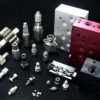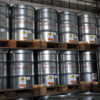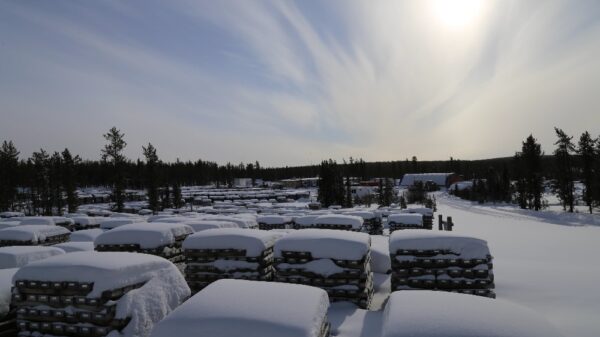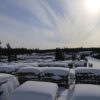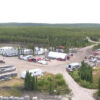Fission Uranium Corp. (TSX: FCU) (OTCQX: FCUUF) (Frankfurt: 2FU) has applied to the Canadian Nuclear Safety Commission to get a construction license for a potential high-grade uranium mine and mill in Patterson Lake South located in Canada’s mineral-rich Athabasca Basin, Saskatchewan.
On Thursday, the Kelowna-based company announced the application where Fission has already started Front End Engineering Design (FEED) and continues to advance on the project. The company has already completed geotechnical drilling, hydrogeological holes, test pits and downhole vertical seismic profiling geophysical surveys.
Fission fully owns and operates the Patterson Lake South (PLS) project, covering 31,039 hectares of land. The project is easily accessible by road, with all-weather Highway 955 providing primary access to the former Cluff Lake mine, which is located to the north of the PLS project area.
The firm has submitted an application for a license to construct in compliance with the Nuclear Safety and Control Act. The project’s environmental assessment is progressing as planned, with community involvement, baseline assessments and data compilation.
The feasibility study concluded that the construction would take three years, with a projected mine life of ten years and a total production of 90.9 million lbs of Triuranium octoxide (U3O8) which is a compound of uranium. Furthermore, the study found that the average unit operating cost would be less than US$10/lb U3O8 (approximately CAD $13.02/lb U3O8).
Read more: Denison Mines finds high-grade uranium during Moon Lake South Winter program
Read more: SKRR Exploration enters LOI to acquire 70% in uranium exploration project
Significant progress has been made during FEED phase
So far, geotechnical drill holes have been completed to support the design of the waste rock stockpiles and mill area facilities. A total of 772.6 meters of drilling across seven holes has been conducted to confirm the feasibility level assessment and to inform future detailed design assessments. Furthermore, 20 test pits were completed along planned road allowances, the waste stockpile area, and the mill area to assess and support earthworks planning at the detailed design stage.
“I am very pleased to confirm that the construction license application for the PLS project has been submitted,” Fission CEO Ross McElroy said.
“Additionally, we have successfully completed our winter field program, and the Front End Engineering Design work is well underway,” he added.
“Our development path to production is progressing on schedule and, at the same time, the fundamentals for uranium continue to strengthen in line with the global reactor construction boom.”
Read more: Basin Uranium and Skyharbour Resources find significant mineralization at Mann Lake
Read more: Western Uranium & Vanadium to build advanced mineral processing plant in Utah
Additionally, downhole VSP geophysical surveys were conducted at the planned decline location and mill area to inform future detailed design assessments. Hydrogeological holes have been completed to gather additional data on the hydraulic conductivity of the basement rock.
Three monitoring wells and two pumping wells totalling 962.8 meters of drilling were drilled close to the R780E crown pillar, and one pumping well was pressure grouted and re-drilled to assess the effectiveness of grouting on reducing hydraulic conductivity within the basement rock.
This additional data will be used to update the hydrogeologic model to inform underground mine planning of a detailed design. The company is currently compiling the feasibility study recommendations to create a scope of work for the FEED and plans to appoint a lead consultant in Q2.
Natalia@mugglehead.com




